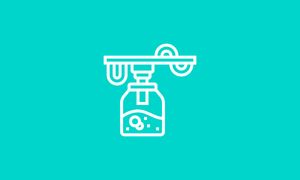You’ve created a blog that delivers valuable information to a good amount of followers. Now what?
Today’s blogs are more than a vehicle to share firsthand experiences and personal opinions. They’re a terrific opportunity to generate income.
This guide will explore how to monetise your blog with five strategies. It will help you determine whether they would be a good fit for your needs.
5 Ideas for How to Monetise Your Blog
There's a lot to consider when developing a blog monetisation strategy.
Time commitment, financial investment, and ease of maintenance are all factors that play a role in determining the best way to earn income with your blog.
Here are five ways you can make money with your blog, their pros and cons, and whether they might be a beneficial option as you work toward your goals.
Strategy 1: Sell Ads
Possibly the most obvious option is to sell ad space on your blog.
Companies will pay you for digital real estate to promote their products with banner ads, background ads, video ads, or text link ads.
Partnering with a business whose products are complementary to your content can provide added value to your viewers.
The pros:
- Capitalise on high traffic numbers: The more people that visit your page, the more opportunities to make money with ad sales.
- Takes little effort: You have to create new blog content anyway. Including ad space doesn’t require much extra work.
- Passive income opportunities: Even archived blog articles can bring in ad sale revenue.
- Low commitment level: Since ads are typically sold by impressions or a monthly fee, you can adjust your strategy at any time.
The cons:
- Direct people away from your site: If visitors click on an ad, they’re sent to that marketer’s website. You can tackle this to a certain degree by opening the advert clicks in a new window.
- Can be disruptive: Too many ads can be annoying to viewers as they interrupt their experience.
- Demand high traffic: Advertisers want to promote on pages with high traffic volume.
A good candidate for ad sales is a blog with high traffic and frequent content.
Blogs that sell products and have a lower traffic volume should avoid this monetisation method.
Strategy 2: Google AdSense
Another version of selling ad space (and a highly popular way for bloggers to make money) is to understand how to monetise your blog with Google AdSense.
As a blogger, you create available ad space in your blog post by including ad code on your site. Then, companies bid in a real-time auction to secure space on your page. The highest-paying ads appear on your blog.
Google handles all of the billing and ensures you receive your payments.
The pros:
- Simple set-up process: Google makes it easy to begin. If you meet basic criteria, you can simply sign up and paste a code (which they provide) into your blog.
- Self-run: Other than the need to occasionally check metrics and make any necessary adjustments, AdSense is fairly hands-off.
- Reliable and consistent pay: AdSense commissions are paid monthly (as long as you meet a $100 payout threshold).
- You’re in control: Test and adjust your ads to ensure they’re yielding the best results. You can also remove them from your blog at any time without penalty.
The cons:
- Lack of security: If Google feels you’ve violated any of their policies, they can shut down your account without warning.
- No guarantee: You only make money when visitors click on the ads. Therefore, you could be promoting a company without receiving compensation.
- Reduced revenue: Any money you make from AdSense ads is shared with Google.
Google AdSense is effective for blogs with low traffic, in niche markets, or as a supplement for other income opportunities.
Blogs that sell their own merchandise or provide authoritative information wouldn’t be as successful with this method of monetisation.
Strategy 3: Affiliate Marketing
For companies wanting to know how to monetise a blog without ads, affiliate marketing may be a good fit.
Through affiliate marketing, bloggers will endorse third-party products and services, and their trusting viewers will click on links for more information.
If those clicks result in purchases, the brands will pay bloggers a commission.
The pros of affiliate marketing include:
- Can be highly lucrative: Payouts can be significant and limitless.
- Easy set-up: Simply sign up for an affiliate program to get a link to share with your readers.
- Wide diversity: Affiliate programs exist for numerous markets.
- Several ways to participate: As an affiliate, you can write a product review, share a link in an article, publish how-to videos using the product, or promote it through social media.
The cons of affiliate marketing include:
- Limited control: Ultimately, the conversion rates depend on the effectiveness of the brand’s website and sales team, which are out of your control.
- Building someone else’s customer list: While you want your referrals to end in sales, those leads become the brand’s customer and may not earn you income beyond the initial sale.
- Competition: Affiliates write about the same products yet want to be the ones to get credit for referrals. This puts you in competition with each other.
- Limited pay: You only get paid for the referrals that convert to customers.
Affiliate marketing is most effective for a blog that has a big mailing list and audiences who are engaged and highly responsive.
Blogs that need to remain neutral or that sell products in direct competition with affiliate goods may want to consider an alternate method for monetisation.
Strategy 4: Product Sales
Rather than sell products for third-party companies, consider selling your own products on your blog.
Don’t have anything that fits the bill? Create digital products like online courses, instructional videos, or e-books that teach valuable information.
Your loyal readers already appreciate the content you publish.
Providing them with additional products that offer further insight will entice them to buy and possibly spread the word to their own contacts.
The pros include:
- Further establishes you as an authority: The more expert content you can publish, the more people will look to you as a thought leader in your field.
- Total control: You determine what content to include, what pricing structure to implement, and how to promote the products.
- Continuing income: Creating evergreen products or materials that can be updated in the future means you can continue to sell those items for years to come.
- Minimal or no set-up cost: Digital products don’t cost much to produce, so your profit margin can be higher.
The cons include:
- Up-front time commitment: It takes time to create valuable content worthy of selling to your audience. You’ll have to put in the work to develop something worthwhile.
- Free content vs. paid content: Your blog provides free quality content on a regular basis. Determining what topics to include in paid content can be challenging.
- Saturation: There are tons of blogs providing for free the kind of information you’re trying to sell. You’ll need to ensure your products contain information people are willing to pay to receive.
If you’re willing to invest the effort to create products that help you to establish yourself as an authority and maximise your income potential, selling your own products can be a good fit for you.
If you’re not able to commit to researching and creating quality material, consider another method of monetisation.
Strategy 5: Members-Only Content
Some bloggers choose to sell a membership that grants people access to premium content.
You can charge a monthly or yearly fee that allows readers to access expert how-to articles, whitepapers, trend studies, and more.
This creates a community of loyal followers and a subset of metrics to provide even more targeted content and advertising.
The pros:
- Constant income: Memberships guarantee you constant payments for the duration of the members’ lifecycle.
- Audience growth: As members gain value from their membership, they may promote you to their own personal and professional contacts.
- Increased lifetime value: Rather than publishing an entire e-book, releasing monthly chapters can provide greater overall sales in membership fees.
The cons:
- Commitment hesitancy: Some readers shy away from signing up for recurring payments and therefore don’t want to commit to a membership.
- Logistical issues: A membership website needs to collect a payment, create user accounts, and allow and restrict access based on membership level.
- Member retention: You’ll need to create products and content to incentivize members to maintain their membership.
Bloggers who have long-term goals can commit time to ongoing content creation and who have built a solid reputation would do well with a membership site.
If you’re not familiar with the topics you’re writing about or don’t have time to maintain a membership site, you should avoid members-only content for now.
Summary
To make money with your blog, the only real blog monetisation requirements are a steady audience and email list growth. If you have these two things, you’re ready to generate revenue with your blog.
In reviewing the content mentioned in this guide, consider which monetisation method helps you achieve your goals while meeting your time and financial restrictions.
Whether you choose one of these methods or a combination thereof, your strategy should propel you toward your mission, provide value to your audience, and generate revenue for continued success.






